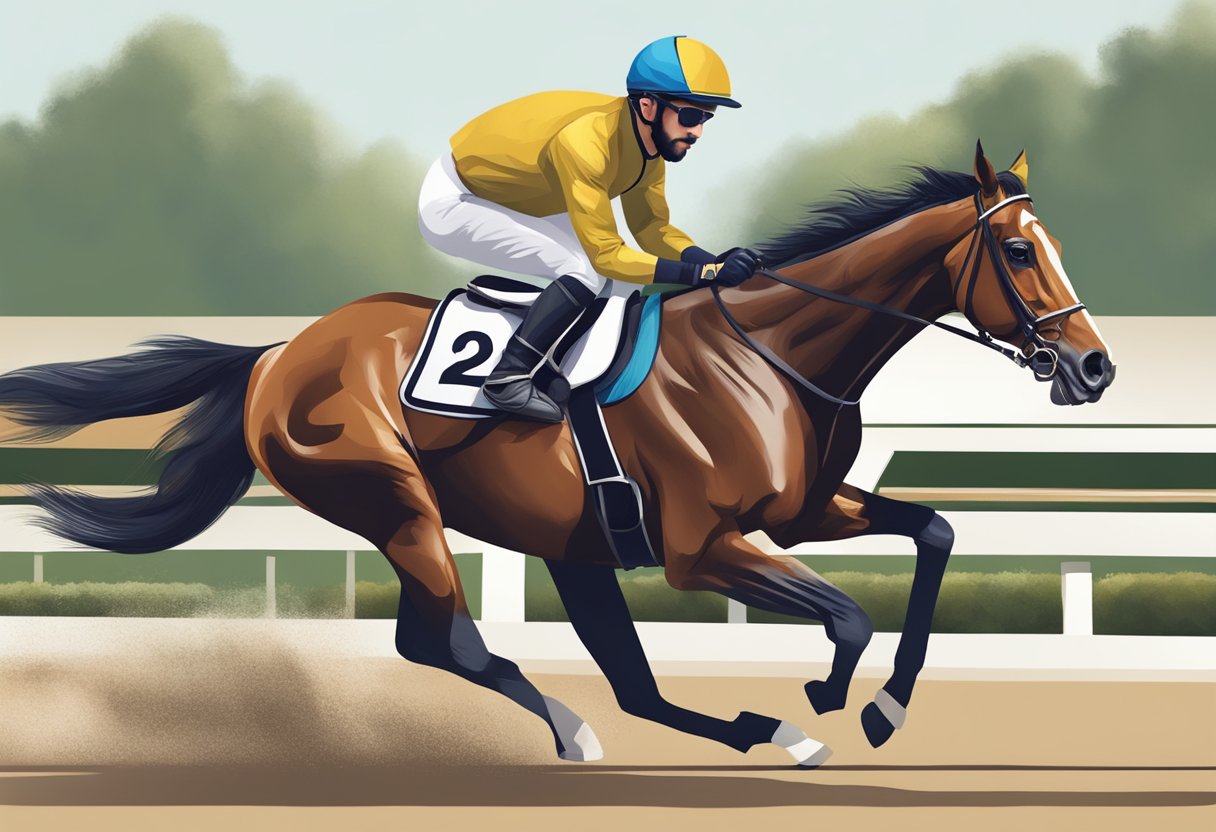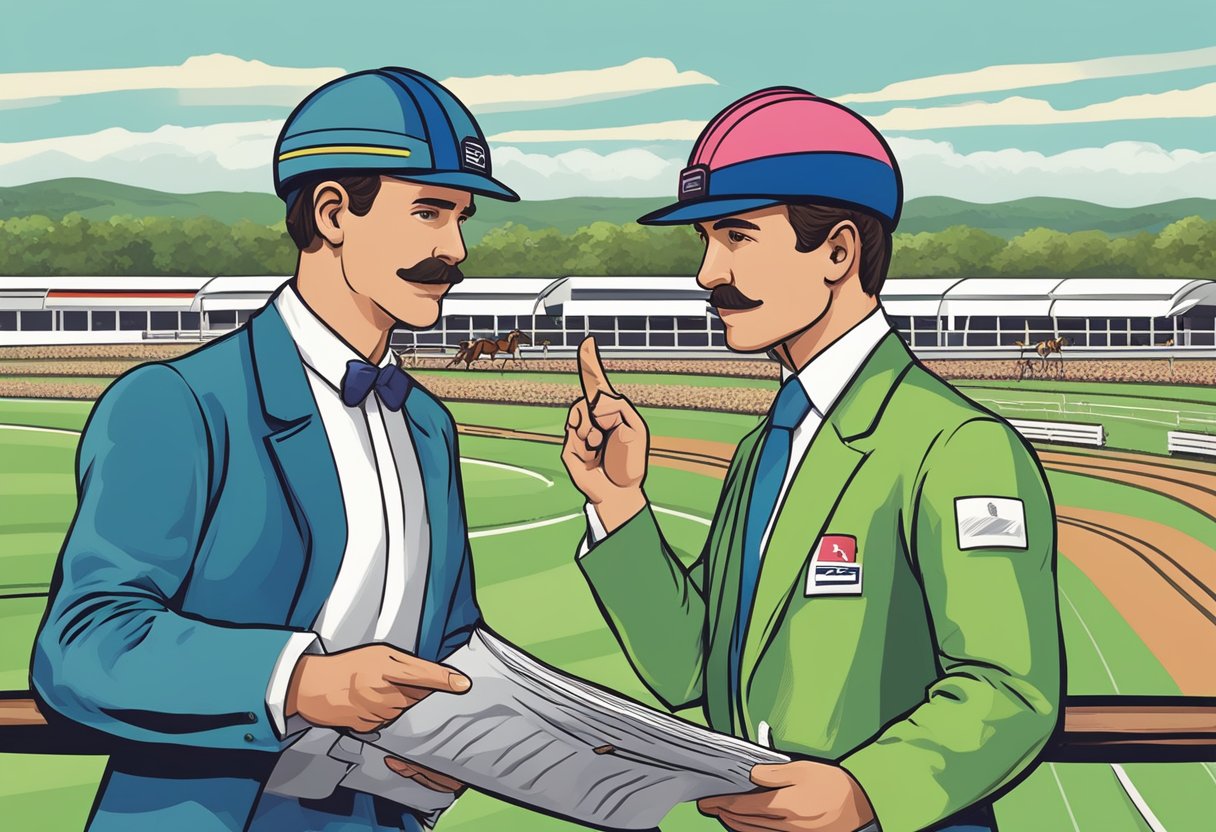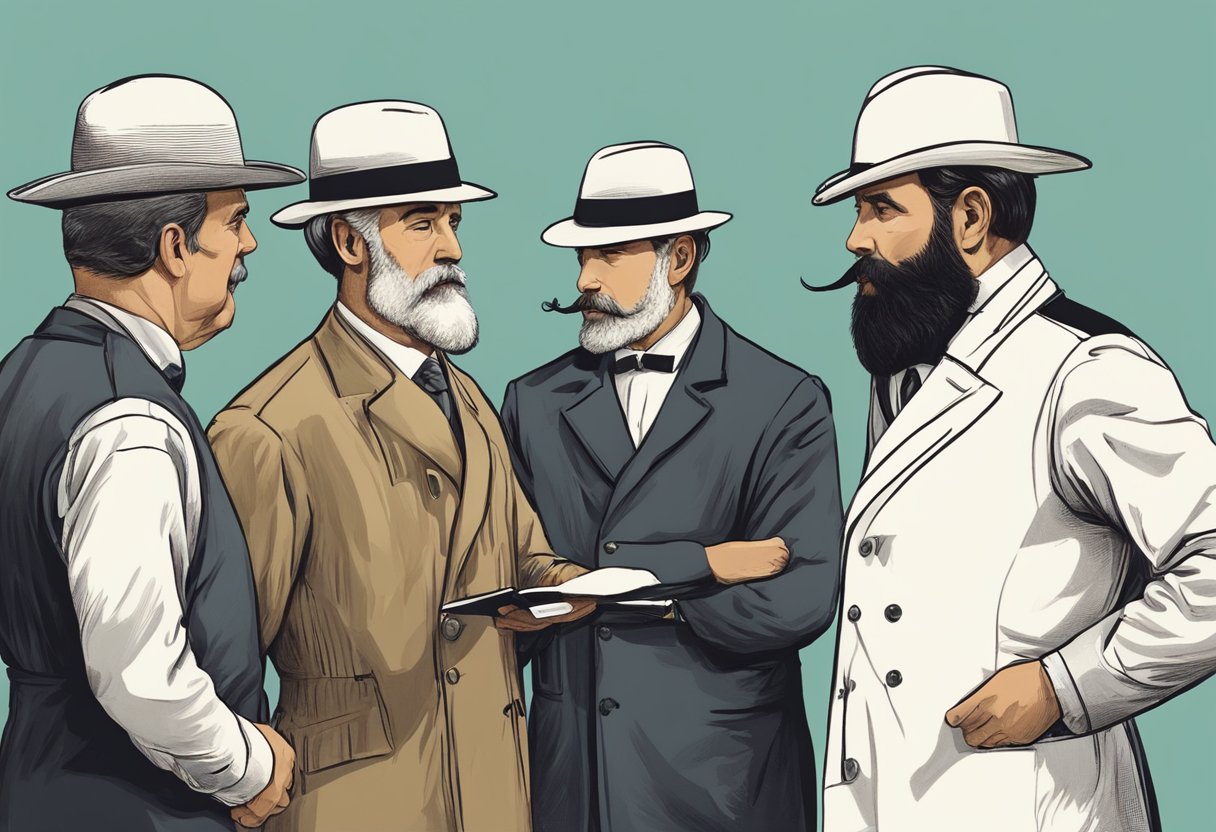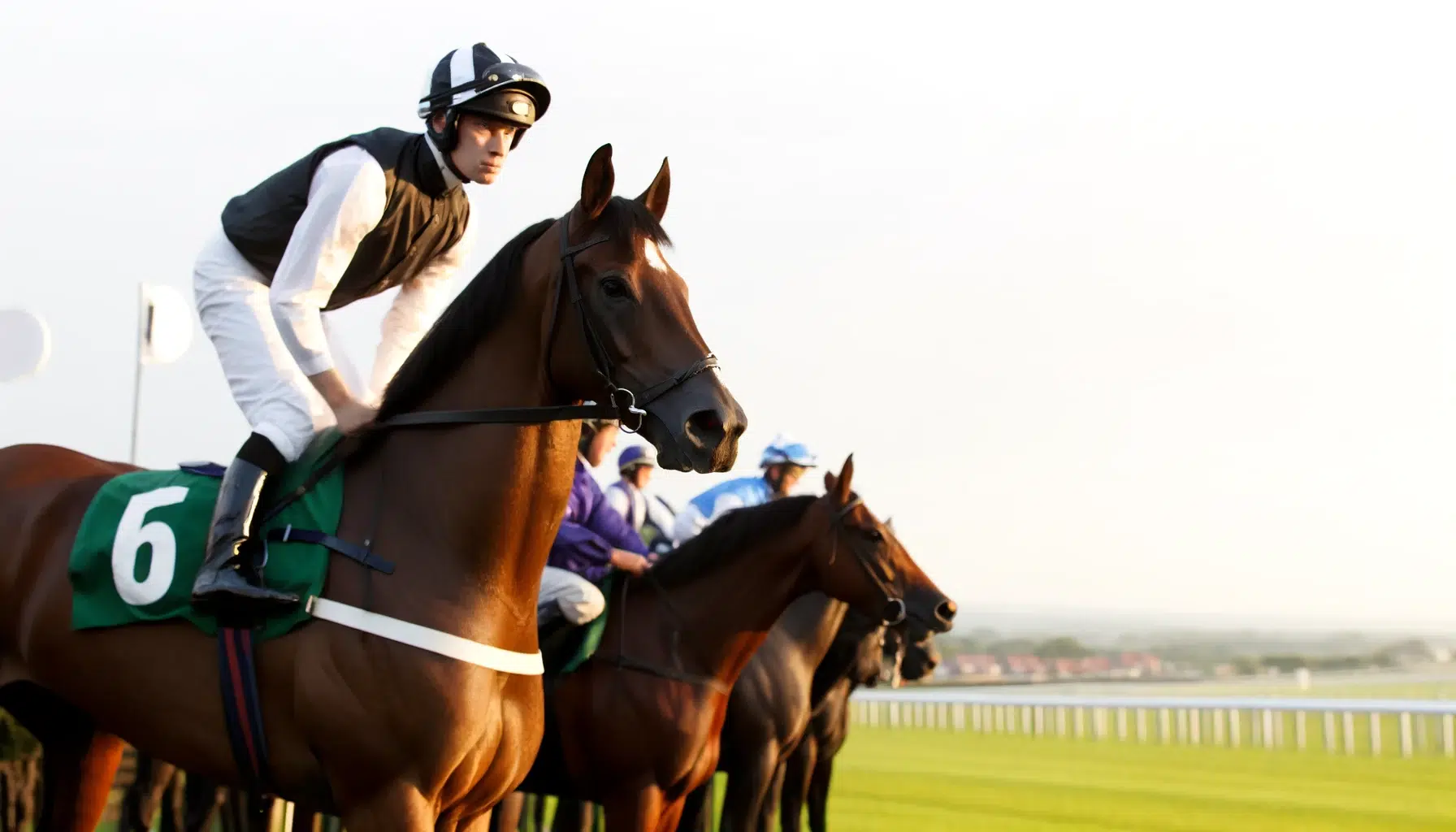[ad_1]
In the world of horse racing that is traditionally very regimented, every detail counts, from the safety equipment to the jockeys appearance. It may seem trivial but the rarity of a beard in a jockey’s face has made it a hot topic. There are many theories as to why jockeys prefer to be clean-shaven. These range from extra weight, the desire for aerodynamic effectiveness to the persistence of a long-standing tradition.

There is no rule in the British Horseracing Authority (BHA) that prohibits facial hair. Jockeys are often the epitome in terms of fitness and grooming. They adhere strictly to weight regulations and have a professional appearance that is conducive for the image of their sport. As visible ambassadors for horse racing, jockeys’ appearances are indicative of the discipline as a whole, where each element is fine-tuned in order to maximise performance and maintain an overall professional look.
Takeaways
- The appearance of jockeys is thought to be influenced primarily by aerodynamics, and tradition.
- In the UK, racing regulations do allow beards.
- The standards of jockey grooming reflect the professionalism and athleticism of horse racing.
Horse Racing: The Role of Appearance

In the competitive world British Horse Racing, appearance is a major factor for all involved, from racehorses to jockeys. This aesthetic is heavily regulated to ensure safety and decorum.
JockeysFor example, adhere to strict Dress codes. They must wear silks with the colours and patterns that represent the Owners They represent. This is what they represent. Racing attire The jockey’s number is used not only to identify the jockeys but also to maintain a tradition and enhance the spectacle.
The appearance of Racehorses It is also a subject of intense attention. Potential indicators FormA shiny coat or a lively walk can influence the racing tips, and subsequently, race results. Results. The grooming of horses is a sign that they are in good health, and also a sign that they are prepared for racing.
On the administrative side of the Rules of RacingThe British Horseracing Authority maintains a number of regulations regarding racing apparel and the conduct of racing participants. These rules can have a significant impact on many aspects of racing, from entry options to elimination sequences.
While jockeys’ facial hair has traditionally received less attention, it is a matter of choice. This is governed by the need to maintain a neat look that reflects positively on the sport’s standards. As Davy Jones’ case shows, jockeys are not restricted from wearing beards as long as they adhere to the standards of the racing world.
In summary, although styles can be varied and personal expression allowed within reason, it is important that the sport maintains a prestigious image that reflects its rich history and the respect owed to its participants.
Horse Racing Facial Hair Policy

Horse racing has strict standards for appearance, which extends to grooming. These standards are designed to maintain a uniform and professional look, but they also allow for individual expression.
General Guidelines
In the horse racing industry, and especially at high-profile events like Royal Ascot or Cheltenham Festival there is an expectation that grooming will be done with professionalism and tradition. Facial hairParticularly BeardsThis is because jockeys prefer to look clean-shaven. This is in part due to the formal attire required – a tailored is often the norm – and a beard can be seen as a deviation from the traditional image expected at such prestigious events.
- StewardsCan enforce grooming standard.
- What to wear when racingThe clean-shaven appearance complements the formal suit attire.
Notable Exceptions
A few jockeys have raced with facial hair. These are rare instances, but they attract attention because of their rarity. Davy Jones’ 1996 win on Digpast was noted as having a beard. Each racecourse may have its own guidelines. It is ultimately up the individual. Stewards It is up to the organizers of the event whether facial hair should be permitted, so the enforcement of these policies is somewhat discretionary.
Equipment and Attire Regulations

In the world of horse racing, jockeys have to adhere to strict rules regarding equipment and clothing to ensure their safety and compliance to the sport’s standards. The equipment must meet predefined standards, and grooming, such as facial hair, can be influenced by tradition and aesthetics.
Racing Attire for Horses
All jockeys must wear a The uniform is usually a silk jacket with matching trousers that represents the colours of their employer or horse owner. The distinctive attire is crucial for identification during races. There is no rule that prohibits beards. However, jockeys tend to maintain a clean shaven appearance. This may be due more to tradition than any specific regulatory requirement.
- Helmet CoverMatches the jacket’s colours
- GogglesProtects your eyes from dirt, debris and dust
- Silk JacketCustom colours and patterns
- BreechesWhite as standard
- BootsTraditionally, black or brown
- GlovesOften colour coordinated with silks
Safety Gear
The British Horseracing Authority requires that all jockeys wear certain safety gear.
- HelmetMust meet high safety standards and reduce head injury risks.
- Body ProtectorA vest that protects vital organs against impact.
Additional equipment includes
- WhipJockeys will use this in a controlled way to encourage their horses without causing any harm. It is held with the backhand and used in strict guidelines.
- Bit and Cheekpieces: A device used to control a horse. During a race, only certain types are permitted.
- NosebandPart of a bridle that is used to close the horse’s lips and give better control.
The attire required by spectators at races can vary depending on the venue and event. Some require more formal clothing than others.
Race Day Procedures

Both pre-race and after-race protocols in the world of horseracing are carefully regulated to ensure fairness and the welfare of horses and jockeys.
Pre-Race Rituals & Inspections
Horses are prepared for a race in the boarding stalls. Parade RingIt is the place where jockeys and horses meet. It is time for final inspections. Stewards Ensure that the racing regulations are followed by overseeing the proceedings.
- Jockey AttireThe rules of the racing authority require that a jockey’s outfit, including their cap, breeches and boots, adhere to them. Although not explicitly stated, it’s expected that they have a cleanly shaven look.
- Whip RulesThe current whip usage rules are explained to the jockeys in order to prevent any abuse during the race.
- Extra WeightWeights can be added to saddles in order to meet handicap requirements. They are then checked for accuracy.
Post-Race Protocols
After the race is over, there are steps to confirm official results and address any infractions.
- Photo FinishIn close races, the winner is determined with extreme precision by a photo finish.
- Penalties for DisqualificationThe stewards may impose penalties or disqualify a runner if they find any infractions.
- Stewards’ InquiriesInterviews may be conducted with jockeys or trainers to clarify any incidents which occurred during the race.
Need Help Beating the Bookies?
Since 2014, our expert betting tippers have been stealing money from the bookies! If you are looking for a winning strategy, then check out these tipsters.
Overview of Governing Bodies & Rules
The complex rules governing facial hair in horse racing are set by the organisations that enforce the sport. These entities ensure fair competition and the integrity of the sport while also taking into consideration the welfare of humans and horses.
British Horseracing Authority Regulations
The following are some of the ways to get in touch with each other: British Horseracing Authority (BHA) It is the primary regulatory body for racing in the United Kingdom. It enforces the Rules of Racing, which outline all participants’ conduct and guidelines. The BHA rules are not explicit about the regulations governing a jockey’s appearance. This includes facial hair. The BHA prioritizes safety, integrity and welfare for both human and equine competitors.
- Participant Welfare BHA oversees the welfare of all jockeys by ensuring they meet all safety criteria during racing and in training.
- Compliance with Regulations: The BHA has a commitment to maintain the tradition and history while simultaneously guiding the sport towards progression.
International Racing Jurisdictions
Internationally, horse-racing jurisdictions can vary in their sartorial regulations and grooming standards. They may also have their own rules that govern jockey appearance and safety.
- United Kingdom and Ireland In the British Isles, both the BHA (British Horseracing Authority) and the equivalent Irish authority (Irish Racing Authority) share similar regulations in racing. There are no specific rules about beards.
- Animal Welfare Organisations The RSPCA is a good example of an organization that is more concerned about the treatment of animals. Horse welfare The grooming standards for jockeys are much higher than those of other horses.
Entities like the Federation Equestre Internationale (FEI)Although the governing body of equestrian sport, which oversees international competition, may have specific rules for international competition, they do not usually dictate overarching regulations regarding facial hair in horse races.
Frequently Asked Questions
This section addresses the most common questions about jockey grooming, with a focus on facial hair and standards for overall appearance within the sport.
Are there any facial-hair restrictions for jockeys?
The British Horseracing Authority does not have any specific rules that prohibit jockeys having moustaches or beards. Generally, jockeys are clean shaven.
Is it normal for jockeys with facial hair to race?
It is uncommon to see jockeys in races with facial hair. The jockey’s weighing-room culture tends to be a very clean-shaven one.
Do male and female jockeys have the same appearance standards as each other?
While there are no specific appearance regulations for jockeys based on their gender, they should maintain a professional look in accordance with safety and tradition.
What are the grooming requirements for jockeys?
A jockey’s appearance must be professional and neat. This includes having a sharp haircut and being clean-shaven in general, although this is more a matter of tradition than a written rule.
Can a jockey own the racehorse that they are riding?
The rules governing ownership of horses by jockeys are designed to protect the integrity and fairness of racing results, as well as to avoid any conflict of interest.
What are the implications of a jockey’s appearance on race day protocol
The jockey’s appearance (including facial hair) has no direct effect on race day protocol, as long as the jockey adheres to the guidelines regarding professional and tidy clothing, which helps to maintain the prestigious reputation of the sport.
[ad_2]



